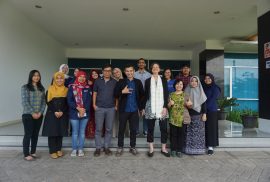The rise of China as a global power has led to the state of panic throughout the world. Despite the insistence by its leaders of China’s ‘peaceful rise,’ fear, anxiety and even hostility toward China has widely been spread. While most analyses are focused more on the implications of the growing power of China on various aspects of power relations, less attention has been given to the way in which China is perceived in other countries. Arguably, the construction of China as a serious threat has played similarly important role in the negative responses of other countries toward the rise of China. The proposed research will fill the gap in the academic discourse on this issue by focusing the analysis on the perception on China and on the framing of its rise. In addition, by focusing on the case of Indonesia, the proposed research will not only help us better understand Indonesian policy toward China but can also be of significance for design more appropriate policy toward China. Departing from constructivist theoretical framework, the research will be conducted through examining documents and speeches, media coverage as well as interviews or focused group discussion.
The fourth industrial revolution or 4IR builds on the digital revolution and combines multiple technologies that are leading to significant shifts in the economy, business, society, and individually. It is characterized by a fusion of technologies that is blurring the lines between the physical, digital, and biological spheres. In practice, it is the idea of smart factories in which machines are augmented with web connectivity and connected to a system that can visualize the entire production chain and make decisions on its own. (Schwab, 2016)
On Tuesday (03/19/19), the Center for Southeast Asian Social Studies (CESASS) Universitas Gajah Mada held a Writing for the International Social Science Journal with Prof. Dr. Judith Schlehe, an SES academic from Albert-Ludwig University of Freiburg and moderator Dr.phil. Vissia Ita Yulianto, one of the PSSAT UGM researchers.
The workshop which was held at the UGM PSSAT Library was attended by 11 participants from various institutions, including the Faculty of Social and Political Sciences of Universitas Gajah Mada, Religious and Cultural Sciences of Universitas Sanata Dharma, and Universitas Merdeka Madiun.









